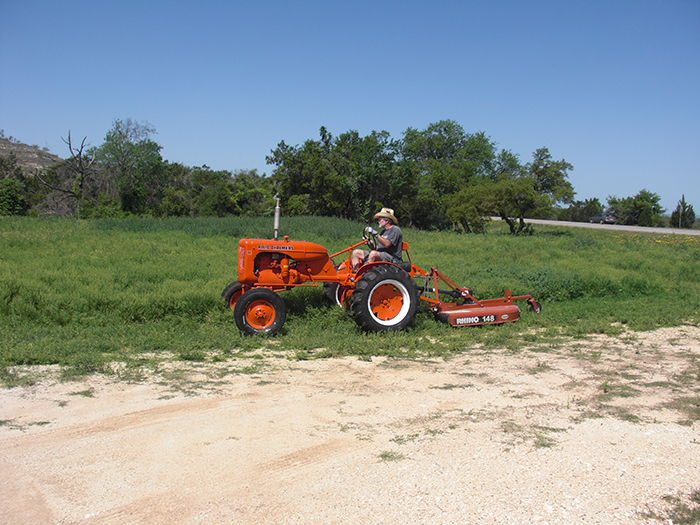
When my friend Doug told me he had inherited a 1939 Allis Chalmers tractor, it got my attention. After all, it DOES have an engine and 4 wheels, the basic ingredients to attract any gearhead. However, my interest was particularly piqued due to my own personal encounter with the exact same model tractor at age 12 (the tractor I was driving overturned at 25 mph and exploded in a spectacular fireball… but that’s a story for another time).
Doug’s Allis Chalmer model “B” came from his family farm in Northern Colorado, and Doug has restored the beast to beautiful working condition.
The Allis Chalmers company created quite a stir when they introduced this little jewel in 1937. Prior to that, most farm tractors were designed for larger farm operations, and were priced well out of range of the smaller (under 100 acre) farms which made up about 60% of all farms in America. The Model “B” was an overnight sensation, and quickly found its place on America’s small farms. By the time Allis Chalmers ceased manufacturing the Model B in 1957, it had produced over 125,000 of them.
The Model B is a perfect study of minimalist 30’s Art Deco styling. Its beauty is in its simplicity. And it was designed with self-maintenance in mind. Many of the parts were standard off-the-shelf items used in other automobiles. The minimalist approach applied to unnecessary accouterments as well.. no need for fancy stuff like engine gages, lights, starters, or even brakes (The only brakes available were an ineffective manual brake handle mounted on each side of the driver’s seat for each main wheel, and actuated by hand/arm)
According to Doug, the rated horsepower of these little 2 liter flathead engines was around 18 HP. But with appropriate gearing, this little tractor can pull a stump out of the ground!
Doug’s tractor is by no-means a smiley-faced garage or show queen, but instead is employed on a regular basis tackling chores around his shop, such as mowing the 1 acre adjacent meadow.
Operation is simplicity itself: Visually check the fuel level; turn on the fuel valve below the accessible carburetor, set the choke position, and then employ the hand crank at the front of the tractor. Usually just 2 or 3 pulls is sufficient to have this little beauty purring and ready to put in a day’s work!
If you enjoy looking over antique tractors and other vintage work engines, be sure and visit the Hill Country Antique Tractor & Engine Club (www.rustyiron.org). They coordinate annual shows in the Hill Country area, including Fredericksburg.







Leave a reply